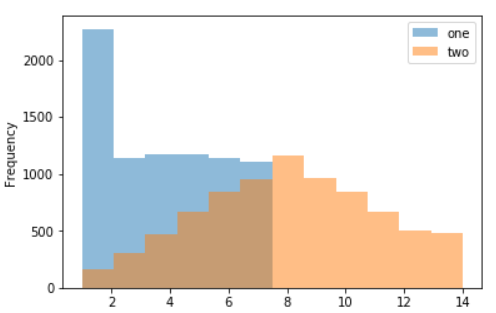Pandas Series: plot.hist() function
Series-plot.hist() function
A histogram is a representation of the distribution of data. This function groups the values of all given Series in the DataFrame into bins and draws all bins in one matplotlib.axes.Axes. This is useful when the DataFrame’s Series are in a similar scale.
The plot.hist() function is used to draw one histogram of the DataFrame’s columns.
Syntax:
Series.plot.hist(self, by=None, bins=10, **kwargs)
Parameters:
| Name | Description | Type/Default Value | Required / Optional |
|---|---|---|---|
| by | Column in the DataFrame to group by. | str or sequence | Optional |
| bins | Number of histogram bins to be used. | int, default 10 | Required |
| **kwds | Additional keyword arguments are documented in DataFrame.plot() | Optional |
Returns: class:matplotlib.AxesSubplot Return a histogram plot.
Example - When we draw a dice 8000 times, we expect to get each value around 2000 times. But when we draw two dices and sum the result, the distribution is going to be quite different. A histogram illustrates those distributions:
Python-Pandas Code:
import numpy as np
import pandas as pd
df = pd.DataFrame(
np.random.randint(1, 8, 8000),
columns = ['one'])
df['two'] = df['one'] + np.random.randint(1, 8, 8000)
ax = df.plot.hist(bins=12, alpha=0.5)
Output:
Previous: Series-plot.density() function
Next: Series-plot.kde() function

